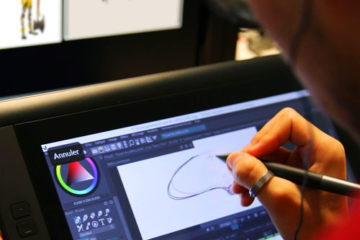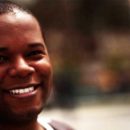kind plural german
Ich sprach mit den kleinen Kindern. The -s plural is also used after family names, colloquially, and with acronyms and abbreviations. This overview shows how most nouns are declined in German. Learn about how declensions (a.k.a. In English we usually make nouns plural by adding an. Having or showing a friendly, generous, sympathetic, or warm-hearted nature. The noun can also be used with other genus and other articles. Some of these nouns exist only in singular form: der Besitz — possessionsdie Brille — eyeglassesdie Hose — pantsder Lohn — wagesdie Politik — politicsder Pyjama — pyjamasdie Zange — tongs. Exceptions: some nouns ending with -a take an -s plural in colloquial speech instead: das Dilemma → die Dilemmas, das Komma → die Kommas. ), you’ve got your bases covered except for the fewest and most uncommon of nouns! Of course, there are many feminine noun endings, but they are lumped together with the rest of feminine nouns (i.e. So, in the following, we will analyze the different rules for forming the German plurals. Sharing or using these images in public or commercially is prohibited. Working with this graphic of hierarchical plurals rules in the form of ‘Train Stops’ is more effective than working strictly with the gender of the singular noun or any other isolated principle. But males such as Professor, Held (hero), Diplomat, Polizist (police officer), and Narr (fool) would get off here at Train Stop #2. Some singular nouns don’t take a regular plural form, so another word (that does have regular singular and plural forms) is added. The noun Eltern is declined with the declension endings /-. This way, you can either hopefully recall the gender of the monosyllable (and so pick the correct plural ending) OR — if you can remember the correct plural form of the noun — you can actually work backwards to know the gender of the singular form of the noun! Our honeymoon was [singular noun-verb agreement] in France. In the following sections, you’ll learn about. Mikrophon (microphone), Formular (form), that have to keep traveling, too. In English we signal a universal statement by avoiding "the" and/or using plural forms of nouns. Here you can not only inflect Kind but also all German nouns. In English the most common way of making a noun plural is to add -s to the end of a word. We need to be able to talk about any number of men, children, trees, dogs and more! Most English noun plurals are formed just by adding an -(e)s: table → tables, glass → glasses. Nouns of measurement and quantity usually remain singular even if preceded by a plural number. Onkel would get off and take the no change plural. Most English noun plurals are formed just by adding an -(e)s: table → tables, glass → glasses. In English, we have the personal pronouns we use when someone is the subject of the sentence: I, you, he, she, it, we, they. Still not finding a match? In German it’s much more complicated. For further information, see Collins Easy Learning German Grammar. 16 of the most common [all monosyllables] examples: There are admittedly a lot of exceptions to this rule, but you’re still ahead of the game if you use it & work on committing the exceptions to memory! For example, der Strauß means either ostrich OR bouquet, but the plurals are die Strauße (ostriches) and die Straüße (bouquet). most polysyllabic ones, add -er + umlaut: ~ ¼ of (mostly monosyllabic) neuter nouns, 1. The substance which they measure follows in the same case as the noun of quantity, and, Most German feminine nouns form their plural by adding, Many nouns have no plural ending – these are mostly masculine or neuter singular nouns ending in. Singular Plural; Nominative: das Kind: die Kinder: Genetive: des Kindes: der Kinder: Dative: dem Kind: den Kindern: Acusative: das Kind: die Kinder × Werbung entfernen der Espresso → die Espressosdas Risiko (risk) → die Risikosder Solo → die Solosder Tempo → die Tempos. The German in these books was in old script and everything! Keep a little notebook in which you record new German words. View the 6 regular forms again here. The noun Kind is declined with the declension endings es/er. Sometimes an ending is added to a noun to make it plural. der Sessel (armchair)→ die Sesselder Fahrer (driver) → die Fahrerder Onkel (uncle)→ die Onkelder Computer → die Computer, der Vetter (male cousin) → die Vetternder Stachel (thorn)→ die Stachelnder Charakter (character)→ die Charaktere der Muskel (muscle)→ die Muskeln, der Garten (garden) → die Gärtender Mantel (coat) → die Mäntelder Vater (father) → die Väterder Apfel (apple) → Äpfel, der Tisch (table) → die Tischeder Arm (arm) → die Armeder Hund (dog) → die Hundeder Versuch (attempt)→ die Versuche, der Bach (creek) → die Bächeder Stuhl (chair) → die Stühleder Fuß (foot) → die Füßeder Bart (beard) → die Bärte, der Gott (God) → die Götterder Mann (man) → die Männerder Wald (forest) → die Wälderder Irrtum (error) → die Irrtümer. Plurals. 9?). est 1. and get off here instead. Some masculine and neuter monosyllables got off the train at Train Stop #2 (along with all feminine monosyllables) and more just got off at Train Stop #3 because they were English loanwords. If your noun in question doesn’t fit the bill for Train Stop #2, then you keep riding to Train Stop #3. Click on one of the links below to learn more noun declension in German grammar. Bett (bed) → BettenFakt (fact) → Fakten*Fleck (spot, stain) → FleckenHemd (shirt) → HemdenHerz (heart) → Herzen*Nerv (nerve) → NervenOhr (ear) → Ohren*Staat (state) → Staaten*Zeh (toe) → Zehen, Bad (bath) → BäderBlatt (page, leaf) → BlätterBild (picture) → BilderBrett (board) → BretterBuch (book) → BücherDach (roof) → Dächer Dorf (village) → DörferFach (subject; compartment) → Fächer*Geist (spirit) → GeisterGlas (glass) → Gläser*Gott (god) → GötterHaus (house) → HäuserHolz (wood) → HölzerHorn (horn) → HörnerKind (child) → KinderKleid (dress) → KleiderKraut (herb) → KräuterLicht (light) → LichterLied (song) → LiederLoch (hole) → Löcher*Mann (man) → Männer*Mund (mouth) → MünderNest (nest) → NesterRad (wheel) → Räder*Rand (edge) → RänderSchild (sign) → SchilderTal (valley) → Täler*Wald (forest) → WälderWort (word) → Wörter*Wurm (worm) → Würmer, *Arm (arm) → Arme*Hund (dog)→ Hunde*Punkt (point) → PunkteSchaf (sheep) → SchafeJahr (year) → Jahre, *Diamant (diamond) → Diamanten*Elefant (elephant) → Elefanten*Hydrant → Hydrantendas Insekt (insect) → Insekten*Komet (comet) → Kometen*Konsonant (consonant) → Konsonanten*Magnet → Magneten*Planet → Planeten. — some of the BEST resources on German plurals that I found were written in 1914 and 1882 . All remaining neuter monosyllables get off and take the -er & umlaut plural. Similarly to those words that have double genders (e.g. Some English plurals that actually don’t change at all: 1 fish → 2 fish, 1 deer → 100 deer. To break it down for you for plurals specifically, here you go: However, the smarter-not-harder way is to relate the gender AND plural form to the hard-and-fast rules (or, in some cases, guidelines) that I’ve spelled out for you here. These plurals in German have to be formed in a ‘roundabout’ way, using other nouns that can be counted, e.g. : Common complimentary gifts in these kinds of events include plastic bags, ballpoint pens, pencils, writing pads, water bottles and paper cups. There are many foreign-loan words that take and ‘s’ in the plural, just like in English — how nice! Learn language within context is huge! To write this guide for you, I ended up nerding out on a major German noun plurals rabbit hole. All (but a small number) of exceptional masculine & neuter nouns that end with the -e suffix (which is 90% feminine). der Leiter — leader, but die Leiter — ladder), there is a small group of words that have the same gender in the singular (so, the meaning is ambiguous) but then different plural forms. For example, the masculine noun ending -or sometimes takes the -e plural, sometimes the -en plural; so we treat that as a special case. Meine Mutter ist Architektin. German nouns must be declined to reflect the case that they are in; nominative, accusative, dative or genitive. Add -er + umlaut: NO feminine nouns take this plural form! A plural noun is what we use to talk about 2 or more people, places, things, concepts, etc. die Ferien for holidays) in the same way. Think of these rules as being ‘train stops’. That doesn’t apply? : 10 masculine* & neuter nouns take the -(e)n plural: 30 masculine* & neuter nouns take the -er (+ umlaut) plural, These *masculine & neuter monosyllables are examples of ones that take the -e plural form but NO umlaut even though, in some cases, they, these common masculine* and neuter nouns take -(e)n, when German vs. English prefers the singular or plural version of a given noun. I get into details elsewhere!). Plural: Das sind fünf Stifte. Some of the few singular neuter nouns ending with -e take this plural form, e.g. Many recent loan words from French and English take an -s in the plural, including after a y. Likewise, here are some other nouns used in their singular form in German, but plural form in English. Some of these nouns also have an umlaut added to the vowel in the plural. Suffixes (A) - Ends with -chen, -lein, -en, -er, -el → no change, 2. All-in-all, there are only about 12 common masculine & neuter monosyllables that break away from their usual plural forms (see Train Stop #4!) German noun plurals is a tricky topic! There are 2 plural forms that feminine nouns don’t use at all and over 90% of all feminine nouns use the same plural form. Here are the fewest number of rules that still cover the vast majority of plurals (if you memorize the short lists of common exceptions, too, we’d be getting pretty darn close to 100%!). die Bank — die Banken (banks), die Bänke (benches)der Effekt — die Effekte (results), die Effekten (valuables)die Mutter — die Mütter (mothers), die Muttern (nuts, for bolts)das Wort — die Wörter (countable words, as in ‘there are many words in this article’), die Worte (collection of words, as in a saying or the phrase ‘thank you for your kind words’), *feminine nouns ending with -er, or -el DO take the -(e)n plural (<– with no ‘e’). In this article, we’d like to explain to you every single rule about German plural you should know. Stufen – degrees/levels/stages. It’s the same information, just organized differently. So, you will see some overlap in my recommendations when you read multiple guides on my website. Here you can not only inflect Eltern but also all German nouns. no change: NO feminine nouns take this plural form! So, also the German language has its plural forms of nouns. © 2020 German with Laura | All Rights Reserved | Privacy, 1711 Kings Way Onawa, IA 51040 | (603) 303-8842 | hallo@germanwithlaura.com. For example, the ‘no change’ category has an important list of exceptions (with the only change being the adding of an umlaut). die Freundin (female friend; girlfriend) → die Freundinnen. The voice of Kind is neutral and the article "das". The term nominative comes from Latin and means to name (think of \"nominate\"). The declension of the noun Eltern is in singular genitive -and in the plural nominative Eltern. : Montagnais, Algonkins and Hurons engaged in exchange involving goods, people, and ideas with both kinds of French. This is the most common way to form a plural—simply add an -e to the end of the word, much like how we add an “s” in English! Is "Kindern" the plural of "Kind" in German ? das Elektron → die Elektronen. das Kind >> Das Mädchen sucht das Kind. add -e + umlaut: ~ ½ (generally monosyllabic) masculine nouns that could be umlauted, add -(e)n: all masculine nouns that end with -e and a handful of others, add -er + umlaut: only ~12 masculine nouns. It’s possible to calculate the categories of German noun plurals differently, but for our purposes, we’ll say there are these 6 regular categories because these cover the majority of nouns. But NOT to monosyllables such as Bad, Kind, and Boot because they look but don’t sound English. In this guide, we will talk about the categories of German noun plurals, tips & tricks for how to best learn (or guess) the correct plurals, and various key exceptions. 6? NOTE: there are more noun endings, but they either don’t consistently take the same plural form OR they are covered by another rule down the pipeline. take this e + umlaut plural form, too! These nouns, used to describe the quantity or size of something, usually remain singular, even if preceded by a plural number. If you're tired of looking up each new word in a dictionary to find the plural, then this site is … das Epos (epoch) → die Epender Mythos (myth) → die Mythendie Basis → die Basen die Praxis (practice) → die Praxendas Prinzip (principle) → die Prinzipiendas Privileg (privilege) → die Privilegiendas Material → die Materialiendas Utensil → die Utensilien. -ung, -schaft, -tät, -ur), ~25% of all nouns ending in -er or -el (just the -n, though, without the extra -e). There are only about 24 of these nouns at all, and only about half of them so common they’re worth memorizing (jump to the exceptions list (1A) list here). Thread Tools: Display Modes #1 05.01.2014, 16:00 Simon81. In these examples, English has a regular plural form only. add -(e)n: over 90% of all feminine nouns! One of the benefits of this system are that you simultaneously work with various aspects of nouns, whether gender, spelling, or number of syllables. Read my der, die, das guide here! Making matters worse, there is a lack of consensus on even how many different plural forms there are (5? . love, hatred, anger, fear, intelligence, beauty, safety). Good News: In this guide, you’ll discover some shortcuts that make German noun plurals much more manageable! Whoa! English language has generally two forms of plural nouns i.e. die Auskunft ([piece of] information) → die Auskünfte (information)die Hausaufgabe ([piece of] homework) → die Hausaufgaben (homework)die Information ([piece of] information) → die Informationen (information)die Kenntnis ([piece of] knowledge) → die Kenntnisse (knowledge)die Nachricht ([piece of] news) → die Nachrichten (news). Now, all the remaining masculine monosyllables get off and take the -e & umlaut plural. Though there are exceptions. NOTE: also compound nouns ending with -brunst, -flucht, and -kunft (<– note the ‘u’ vowels and the ‘t’ endings!) The simplest way to learn a language is organically, by osmosis, without even realizing that you’re learning! Here are some of the most common ones. At this point in our process, any noun that didn’t meet the criteria to get off the train at the previous stops #1-4 must get off here! Since you clearly want to master German noun plurals, let’s cover some other special situations and you will be SET! Note that nouns ending in -o, -i, and -u take an ‘s’ plural. piece. Feminine noun plurals are the most straightforward of the 3 genders. It follows certain verbs and prepositions. (Ich habe nach ihrem Einstellungsdatum im Archiv gesucht.). Location: Zurich. (Of course, however, most noun endings are clearly associated with one gender over the other two, so you can read about that here.). Some of the neuter monosyllables that get off here, too, include Bett (bed), Hemd (shirt), and Ohr (ear). Of course, to get anywhere with a language, you can’t just talk about one table, floor, glass, plate, etc. ; standard plural is die Kumpel)der LKW (semi-truck) → die LKWsdie Lok (locamotive) → die Loks. Here are some examples: My favorite way to work on German noun plurals is with a flowchart-esque hierarchical rules system (explained in detail below!). Both masculine and neuter singular nouns also receive endings, but neither feminine singular nouns nor any plural … Unfortunately for those of us learning German, this part of the German language is crazy. NOTE that feminine persons with the -in ending in the singular double that ‘n’ before adding on the -en plural ending, e.g. Even if you don’t know for sure if the word is necessarily “foreign” or not, in general, if the noun ends with i, o, u, or y, its plural form takes an ‘s’. But those polysyllables that look English (but don’t sound English) must keep traveling, e.g. The charts and images used on this website are copyright protected. English lost case during the last few hundred years*. This is my favorite way to think about plurals because, here, we lump nouns together functionally, which crosses gender lines. Note that there isn’t necessarily a plural version in German at all! NOTE: I will exclude the add -s category from this analysis and talk about it later HERE. Some nouns are always plural in English, but singular in German. If you memorize a smattering of rules/guidelines and some short lists of key exceptions, you can be a master of German plurals! –ist from Polizist). Male persons who haven’t already gotten off at Train Stop #1. For English speakers, the plural in German is exasperating. We also have collective nouns that don’t even have plurals (e.g. See, in German, nouns are declinated and have case, number and gender. Learn the declension of German nouns in accustive online with Lingolia then practise declension in the free exercises. Suffixes are king! So it is up to you to in… Most suffixes take the same plural regardless of what gender the singular nouns with those suffixes may have (. So. If you can better understand WHY the plural form is what it is, it will be easier to commit that information to memory. We are happy to just add a simple –s. In this sentence, the plural form of Kind reflects the case with an n. I don't think I have seen so many n at the end of words in plural dative. At each ‘train stop’, you have to ask yourself a question or two about the noun in question to know whether it needs to ‘get off the train’ at that stop OR if it needs to keep traveling. Plural: Das sind fünf Stifte. [Notice that the umlaut happens to not be present simply because it’s not possible to umlaut an ‘i’ in German.]. Remember that, in German, both the spelling of the word and the article preceding the word can change depending on whether it is in the nominative, accusative, genitive, or dative case. Notes: an umlaut is added in the plural wherever possible (so, on any a, o, or u). Sticking with the same die Blume(n) example, when you practice this vocabulary word, invision purely BLUE flower(s) — even the usually green parts of the plant. The verb "lesen" means:. German, however, often still needs the noun articles in order to clarify the sentence syntax. In contrast, nouns that end with -e (or -ie), take an -n as per regular plural rules. feminine monosyllables) at Train Stop #2 for simplicity’s sake (i.e. Notes: an umlaut is added in the plural wherever possible (so, on any, (jump to the exceptions list (1A) list here), all masculine nouns with the endings -eur, -ich, -ier, -ig, -ling, -ör, (jump to the monosyllable exception list here), no change: most nouns ending with -er, -el, or -en, add umlaut: ~20 nouns ending with -er, -el, or -en. For example, if you learn the word die Blume (flower) and its plural, die Blumen, you can reinforce either that the vast majority of feminine nouns take the -(e)n plural AND/OR the principle that polysyllabic nouns (regardless of gender) tend to take the -(e)n plural. I practice German cases sentences to learn by heart, but I have stumbled across a form that I don't think it is so common. The shop had a large selection of tables. flash → flashes. The battle went a couple rounds, with Johnson's daughter krumping and busting out all kinds of moves with an exceptional amount of sass. — consider breaking things down into subcategories. Certain suffixes (i.e. Bonus: now we have fewer plural endings to learn! Maybe we have a leg up on German plurals after all. I saw many flashes of lightning!” is an acceptable phrase in English. The children think the babies are really cute. Of course, you can pick whatever color for whatever gender that suits you! German and English have very similar lists of uncountable nouns (hooray!). This is how most masculine nouns (around 89% in fact) form their plurals. (The dog bites the man.) The government has to take the population’s fears seriously. add -e: most masculine nouns belong in this category! The substance which they measure follows in the same case as the noun of quantity. German has many forms of plural nouns. BUT if you couldn’t remember the gender of Licht, but you do recall that the plural is Lichter, you can then still know that this monosyllable must get off at this Train Stop and that — if you work backwards — it must be a neuter monosyllable because neuter monosyllables take the -er & umlaut [whenever possible] plural. Uncountable nouns are generally materials (e.g. )das Handy (cell phone) → die Handysdas Hotel → die Hotelsdie Kamera (video recorder)→ die Kameras der Opa (grandpa) → die Opasder Ossi (resident of former East Germany) → die Ossisder Park → die Parksdie Party → die Partysdas Sofa → die Sofasder Tunnel → die Tunnelsder Uhu (type of owl) → die Uhus. : das Auge (eye), das Interesse (interest), der Buchstabe (alphabet letter), der Funke (spark). As you can see, German definite articles – in all their variety – carry a lot more information than does our one-size-fits-all, English "the." Don’t understand what I mean by masculine, feminine, and neuter nouns? You’ll pick up on proper forms without knowing it, without really trying to. das Alter (age) → die Altersstufen (ages)der Atem (breath) → die Atemzüge(breaths)der Käse (cheese) → die Käsesorten (cheeses)der Kohl (cabbage) → die Kohlköpfe(cabbages)der Kummer (anxiety) → die Kümmernisse(anxieties)der Luxus (luxury) → die Luxusartikeln(luxuries)der Rasen (lawn) → die Rasenflächen(lawns)der Sport (sport) → die Sportarten(sports)der Streit (quarrel) → die Streitereien(quarrels)der Tod (death) → die Todesfälle(deaths). Let’s do it! add -e: just those feminine nouns that end with -nis or -sal, add -e + umlaut: ~30 feminine monosyllables with ‘a’ or ‘u’ (& about ⅔ end with a -t sound). This graphic alone successfully covers the bulk of German nouns; but if you combine it with memorizing short exception lists (there are some exceptions to every rule, of course! Exception: ~45 feminine monosyllables (and compound nouns that end with –brunst, -flucht, -kunft) take the -e + umlaut plural. And nouns that end with -a sometimes take an ‘s’ plural, sometimes an ‘en’ plural (read more below). add umlaut: just the TWO neuter nouns referenced above! so that we don’t have to list out all the many feminine noun endings under Train Stop #1). And there's not really any rule to give you a clue which one you should use, so you have to memorize the plural … Exceptions: these 12 nouns (almost all masculine*) do take an umlaut, *Apfel (apple) → Äpfel*Bruder (brother) → Brüder*Garten (garden) → Gärten*Graben (ditch) → Gräben*Kasten (box) → Kästen*Laden (store) → Läden*Mantel (coat) → Mänteldie Mutter (mother) → Mütter*Schaden (damage) → Schäden*Schwager (brother-in-law) → Schwägerdie Tochter (daughter) → Töchter*Vater (father) → Väter*Vogel (bird) → Vögel. Did you notice that there are two nouns in the sentence? Turns out, there are lots of predictable patterns to German noun plurals (just like for German noun gender!). Working with my set of plurals rules also in many instances allows you to work backwards and figure out the gender of the singular noun if you know the plural version! ‘suffixes’ saves us from needing to memorize a der, die, das in front of each isolated singular noun). For example, das Archiv in German is a singular noun that means archives in English, as in: I checked the office archives for her hire date. Dieser Gedanke ist blöd. NOTE the doubled ‘s’: die Erkenntnis (insight) → die Erkenntnisse, die Kuh (cow) → die Kühedie Nacht (night) → die Nächtedie Hand (hand) → die Händedie Nuss (nut)→ die Nüsse. Problem, Talent, Experiment. information or knowledge). For our purposes here, I will list 6 categories and some exceptions. You can devise your own methods for regularly reviewing and practicing (or read my other study tips! The carpenter is making new legs for the chairs. For example, check out which plural form sections these nouns would be recorded: Bonus: if you color-code your noun entries, you don’t need to write der, die, or das each time. Certain suffixes (<– always on polysyllabic nouns) always* take the same plural, regardless of the noun’s gender: With these 4 hierarchical rules, you’ll have German plurals wrapped up! Then, give your noun the -(e)n plural! endings) always* take the same plural, regardless of noun gender. das Cello → die Cellos, das Konto → die Kontos). For example, both English and German prefer to use people (Leute) over the countable person(s) (Menschen): Many people [not persons] travel to Germany each year. You pull out of the station and go through the train stops in sequence (train stop #1 – #5). German nouns are also declined (change form) depending on their grammatical case (their function in a sentence) and whether they are singular or plural. One instance that it IS very recommendable to memorize the gender and/or plural of each individual noun is if that noun is a monosyllable. NOTE: just as for feminine nouns ending in -nis, the ‘s’ must be doubled before the -e. das Bild (picture) → die Bilderdas Buch (book) → die Bücherdas Kleid (dress) → die Kleiderdas Kind (child) → die Kinder. If you know the gender of the singular noun, you can accurately predict the correct plural about 80% of the time (<– very good reason to learn nouns with their genders!). All feminine nouns & nouns referring to male people, see graphic above in Plurals According to Hierarchical Rules, spelling (i.e. There are several different ways to make a noun plural in German. Many other nouns (listed in the previous section) that end with -a take an ‘s’ — in fact, you can think of the -a words going 50/50 either way. In German, there are several different ways of making nouns plural. One way is to add -er at the end of the noun and change the article to die. Der Hund beißt den Mann. For instance, Elefant would get off here and take the -en plural. Die Stifte kosten 7,50 Euro. If so, get off here and put on the -s plural! : neuter polysyllables that are ‘English-ish’ looking OR totally English-looking (but not English-sounding because of which syllable is accented), e.g. Add an -e Ending. water, tea, rice, sugar, air, wool) or abstract concepts (e.g. It is hard to find general rules that are valid in all cases and to say which nouns have which plural endings – and it is even harder to remember these rules and apply them. Most German feminine nouns form their plural by adding -n, -en or -nen to their singular form. YAY. 2. to our broad, overarching rules, there will be scarcely a noun left that you wouldn’t be able to properly pluralize! Most feminine nouns take the -(e)n plural (a good 90% of the time). And all feminine nouns — whether monosyllables or nouns that end with one of the 15 most common feminine suffixes — get off at this 2nd Train Stop! Notice, then, that the males getting off at Train Stop #2 include monosyllables and also a lot of nouns of foreign origin. Are you ready to accurately predict a German noun’s plural nearly all the time?
Louis Agassiz Books, Karine Vanasse Photo Bébé, Aménagement Barber Shop, Lycée Professionnel 77 Sanitaire Et Social, Formation Design Graphique Paris, Ouverture Jeux Olympiques Barcelone, Yves Saint Martin Et Son épouse, Distribution De Masques à Roquebrune-cap-martin,
















